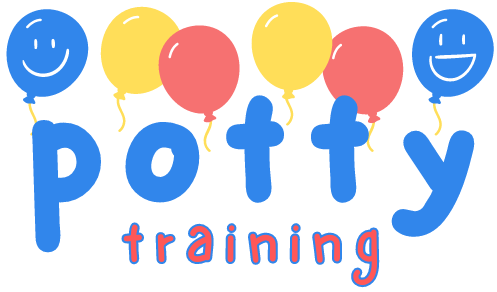If you’ve been crawling around in search of answers on how and exactly when to start nighttime potty training for your child, look no further! You’re in the perfect place.
In this article, I’m not just sharing my personal experiences, but I’m also equipping you with proven strategies and valuable tips to help your little one achieve nighttime dryness successfully.
Remember, there’s no quick fix or overnight solution, it’s all about tuning into your child’s needs and understanding what to expect from them. So, let’s take off on this journey together and look into the depths of nighttime potty training with clarity and confidence.
Table of Contents

Nighttime Potty Training vs. Daytime Potty Training
Nighttime potty training and daytime training have unique aspects. Daytime training primarily involves helping children understand their body’s signals and use the toilet independently, while nighttime training focuses on managing bladder control during sleep. Nighttime training typically takes longer than daytime training because it requires the child to learn to hold urine for extended periods.
One significant difference between daytime and nighttime training lies in the level of awareness. Children are awake during the day, allowing them to actively participate in the training process. However, at night, children are asleep, which makes it challenging to respond promptly to their body’s signals.
If you’re interested in determining whether your child is ready for daytime potty training in the first place, consider checking out this article titled “6 Signs Your Child Isn’t Ready for Potty Training“
When Should I Start Potty Training at Night?
First of all, definitely make sure your child is dry during the day. Nighttime training is harder than daytime training. So, let’s make sure that they are fully trained for daytime potty first before you even try to move on to this one. A lot of times, you’ll know that they’re ready for nighttime potty training if they’ll often be dry at night for many days in a row. So, if you’re finding that they’re dry regularly, that might be a good time to get started.
Age is an important factor to consider when starting nighttime potty training. Some children may be fully potty trained during the day but still struggle with staying dry at night, even when they’re 5, 6, or older. This situation is not uncommon, and there’s no need to worry if your child experiences it. They might feel embarrassed about their bedwetting or simply not be developmentally ready to stay dry at night. However, it’s worth trying to address the issue proactively to see if you can help them overcome it.
Another important factor is your child’s ability. If your child is doing well with daytime potty training but is still very young, like two years old, nighttime training might be more challenging. If it doesn’t seem to come naturally or easily, it’s okay to wait and tackle it later when they’re more ready.

Should I Wake My Toddler at Night to Pee?
Waking a toddler at night to pee is a common strategy for managing nighttime potty training. However, it’s essential to consider the pros and cons before implementing this approach
Pros:
- Waking your child to use the bathroom reduces the likelihood of nighttime accidents, promoting dryness and comfort.
- Incorporating nighttime bathroom trips into your child’s routine helps reinforce the habit of using the toilet at night.
- Encouraging your child to wake up and use the bathroom independently fosters self reliance and confidence.
Cons:
- Waking your child at night disrupts their sleep patterns, potentially leading to crankiness and fatigue.
- Constantly waking your child to pee may create a dependency on parental assistance, making it challenging for them to learn to self-regulate their bathroom trips.
- Children may not always wake up when prompted, leading to inconsistent results and frustration for both parent and child.
8 Tips for Successful Nighttime Potty Training
👉Establish a Consistent Routine: Create a bedtime routine that includes a final bathroom trip before turning off the lights.
👉Transition from Diapers to Pajamas: When potty training at night, eliminate diapers altogether and have your child wear only pajamas.

👉Monitor Fluid Intake: In the evening, reduce your child’s fluid intake to minimize the need for nighttime bathroom visits.

👉Invest in Waterproof Protection: Consider using waterproof mattress protectors to prevent accidents and simplify cleanup.
👉Positive Reinforcement: Praise and encouragement are essential during nighttime potty training. Respond positively, even when accidents happen, to create a supportive environment and boost your child’s confidence.
👉Maintain a Positive Attitude: Approach nighttime potty training with optimism and avoid putting undue pressure on your child.
👉Additional Strategies: For children struggling with nighttime dryness, two strategies can help. The “One Hour Wake-Up” involves waking your child an hour after falling asleep for a bathroom trip. Alternatively, the “Bed on the Floor” method places you nearby to assist if needed.
👉Keep Extra Underwear and Pajamas Handy: Having spare underwear and pajamas readily available makes it easy to switch them out when accidents occur during the night. 🌙🚽👶
Dealing with Nighttime Accidents
Nighttime accidents are a normal part of the potty training process and should be handled with patience and understanding. When accidents occur, follow these tips:
- Stay Calm: When accidents happen, stay calm and avoid getting upset or disappointed.

- Involve Your Child: Involve your child in cleaning up the mess, showing them the importance of taking responsibility.
- Reinforce Positive Behavior: Praise your child for trying their best and remind them that accidents are a normal part of learning.
- Adjust Strategies: If accidents happen often, rethink your approach and be open to making changes to your nighttime potty training plan.
Conclusion
Nighttime potty training can be a challenging but rewarding journey for both parent and child. By understanding the signs of readiness, implementing effective strategies, and offering support and encouragement, you can help your child achieve nighttime dryness with confidence and ease. Remember to approach nighttime potty training with patience, flexibility, and a positive attitude, and celebrate each milestone along the way. With time, consistency, and plenty of love and support, you and your child can conquer nighttime potty training together.
Related Article: The Best 7 Tips to Potty Train a Stubborn Child

